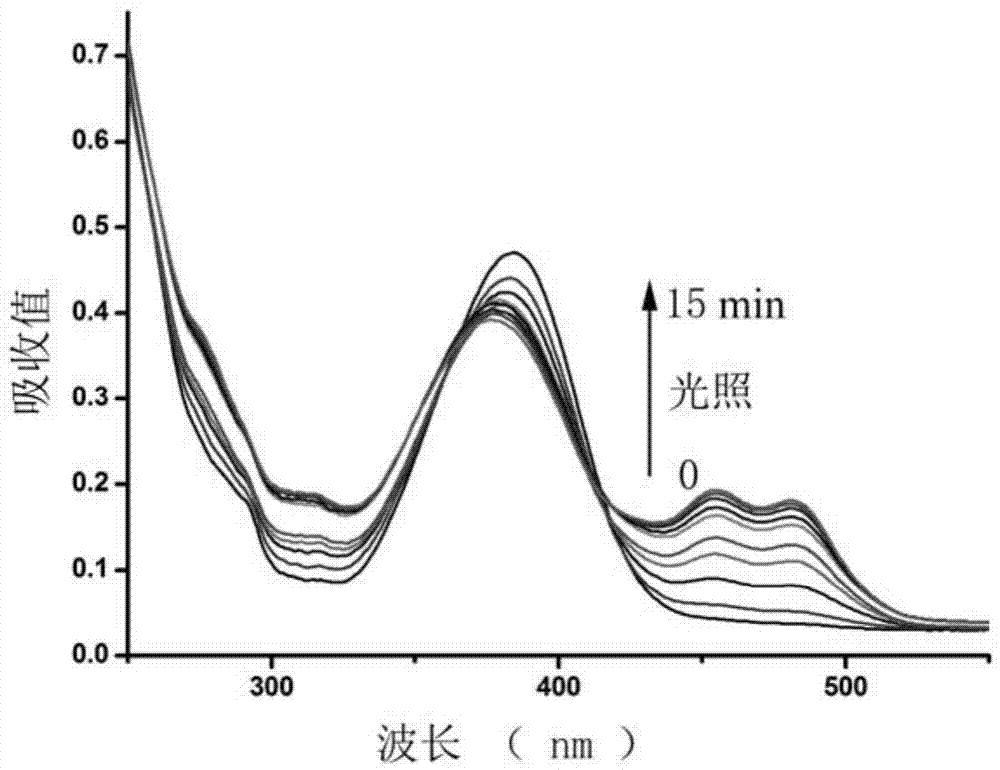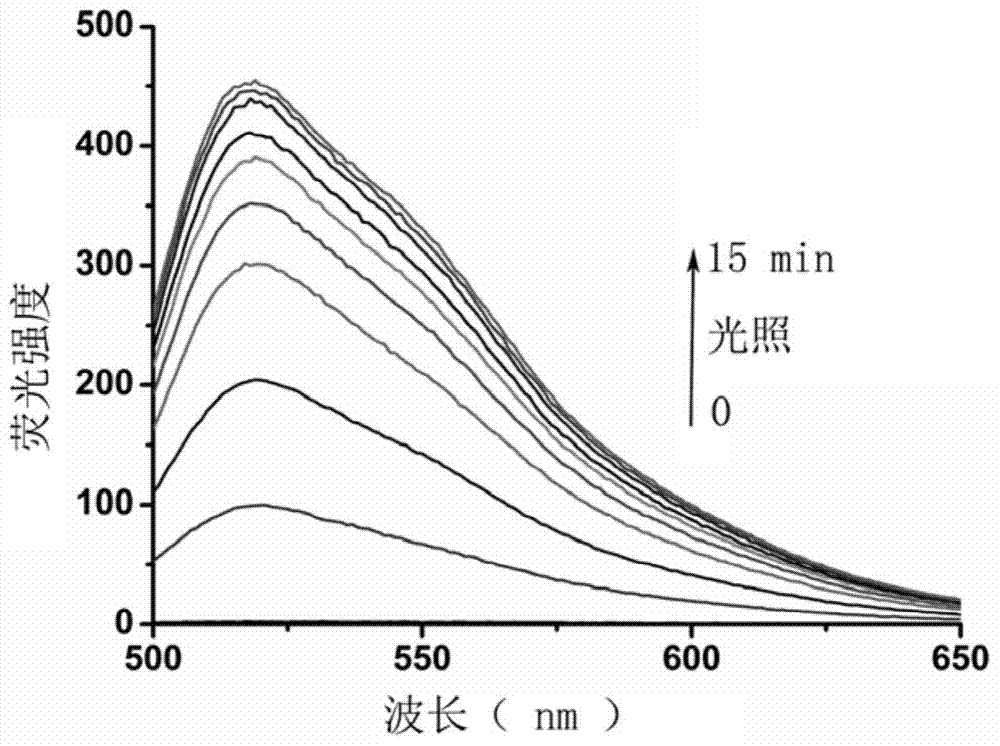Light activated fluorescent probe having protein label positioning function as well as preparation method and application thereof
A fluorescent probe and light-activated technology, applied in the field of fluorescent probes, can solve the problems of no spontaneous transmembrane ability, low degree of specific labeling, inability to use live cell imaging, etc., achieve specific positioning, and the preparation method is simple and easy Line, high yield effect
- Summary
- Abstract
- Description
- Claims
- Application Information
AI Technical Summary
Problems solved by technology
Method used
Image
Examples
Embodiment 1
[0030] A method for synthesizing a light-activated fluorescent probe with protein label positioning, the specific molecule is composed of the following structural formula I:
[0031]
[0032] Concrete synthetic steps are as follows:
[0033] (1) Add 35g resorcinol and 240ml methanesulfonic acid into a 500ml round bottom flask, add 30g trimellitic anhydride under nitrogen protection, mix well and stir at 145°C for 24h, pour into ice water after cooling, filter, Washed with water, dried, and recrystallized from ethanol to obtain 30g, yield 60%. The resulting product 5(6)-carboxyfluorescein, after drying, take 5g of 5(6)-carboxyfluorescein (12.8mmol) in a 50mL round bottom flask, and then add 24mL of Ac 2 O (0.26mol), heated to reflux for 3h, cooled to room temperature after complete reaction, then poured the reaction liquid into about 200mL of ice water, extracted with ethyl acetate (150mL×3), washed the organic phase with water (150mL×3), anhydrous Na 2 SO 4 After drying,...
Embodiment 2
[0044]UV absorption and fluorescence properties of a photoactivatable fluorescent probe with protein tag localization in methanol. Fluorescent probe of the present invention in methanol (concentration is 10 -5 mol / L) UV-Vis absorption spectrum- figure 2 (0 minute curve) and fluorescence emission spectrum- image 3 (0 minute curve).
[0045] figure 2 It is the ultraviolet-visible light absorption spectrum of the photoactivation process of the probe of the present invention. at 10mw / cm 2 Under the irradiation of 365nm light with light intensity, after about 10 minutes, the absorption peak of fluorescein at about 490nm reaches the peak value, which shows that the 4-position ester bond of coumarin is broken, and N,N'-dimethylethylenediamine quickly Self-elimination, releasing fluorescein.
[0046] image 3 It is the fluorescence emission spectrum of the photoactivation process of the probe of the present invention. It can be seen from the figure that the background fluor...
Embodiment 3
[0048] Light-activatable fluorescent probes with protein tags localized for imaging detection in living cells. After the target protein and Halo-tag (dehalogenase) are fused and expressed by gene fusion technology, the Halo-tag ligand (this ligand is on the probe of the present invention) can be directly and specifically labeled on the fusion protein under physiological conditions on the Halo-tag.
[0049] Figure 4 In order to use light-activated fluorescent probes with protein label localization for imaging detection in living cells, the cell line used is 293 cells that have expressed the NLS-Halo label in the nucleus in advance, 10uM of the probe of the present invention is incubated with the cells for 30min, and then Wash 3 times and perform light-activated fluorescence test with microscope light source. Quantitative analysis of the cell area and background area of the imaging data found that the probe can effectively enter the cell and specifically localize in the nuc...
PUM
 Login to View More
Login to View More Abstract
Description
Claims
Application Information
 Login to View More
Login to View More - R&D
- Intellectual Property
- Life Sciences
- Materials
- Tech Scout
- Unparalleled Data Quality
- Higher Quality Content
- 60% Fewer Hallucinations
Browse by: Latest US Patents, China's latest patents, Technical Efficacy Thesaurus, Application Domain, Technology Topic, Popular Technical Reports.
© 2025 PatSnap. All rights reserved.Legal|Privacy policy|Modern Slavery Act Transparency Statement|Sitemap|About US| Contact US: help@patsnap.com



